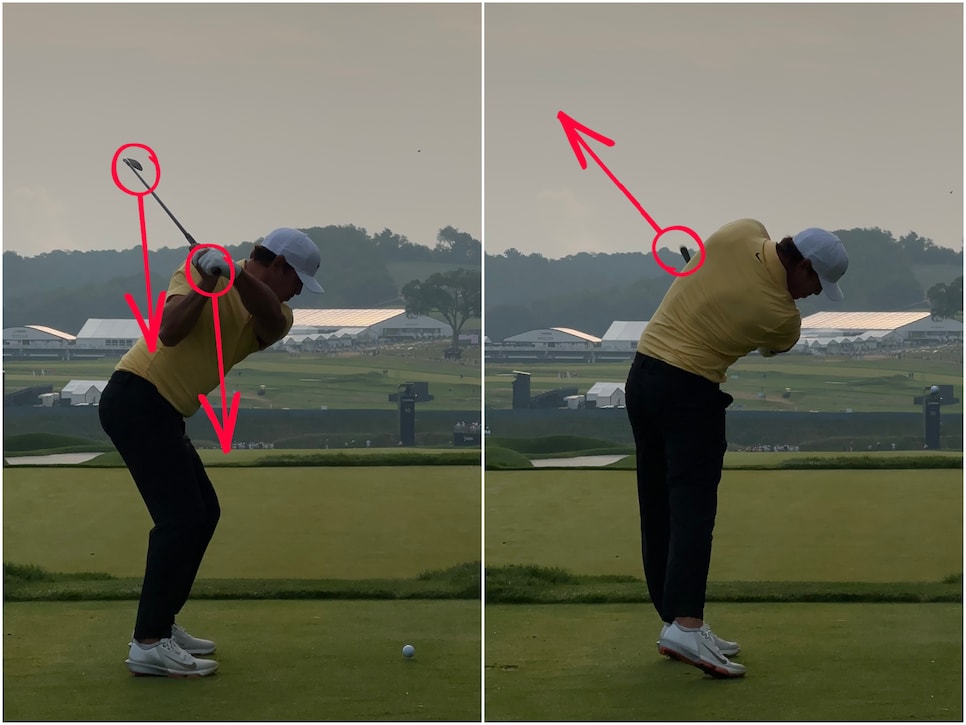OAKMONT, Penn. — Brooks Koepka is a better golfer than most of us can ever dream of being. Yet golf, at some fundamental level, poses the same problems to every golfer.
One of those is matching what you feel in your golf swing with what is actually happening.
At the 2025 U.S. Open, Brooks Koepka finally started matching those together—and it’s vaulting him towards the top of the leaderboard at Oakmont.
“My perception of where the golf club was and where it was was eight inches off, nine inches off,” Koepka says. “I wasn’t consistent enough. When I felt like I cut one, it was drawing. I felt like I blocked one, it would go straight. I just had no sense of reality of where things were. My perception, like I said, was so far off.”
Pressure down, then around
Brooks Koepka’s coach, the legendary instructor Pete Cowen, said the pair in recent weeks have been working on tuning up Brooks’ downswing. Specifically, the moments immediately before impact.
“We’ve been fixing his delivery position,” Cowen says. “When he does that, we can pressure the golf swing correctly.”
He mentioned it there, but creating pressure and compression is a key part of Cowen’s teaching.
Koepka said he had slipped into some “bad habits” recently, one example of which can cause, in Cowen’s words, a pressure loss in the golf swing that starts with the delivery position—the area of Cowen and Koepka’s recent focus.

- Koepka can occasionally get the club too far behind his hands on the downswing—”getting stuck” as it’s more commonly known.
- When this happens, he has to roll and throw his hands out to the right.
- This rapid roll of the hands can give Koepka a disastrous double cross. His preferred left-to-right fade can turn into an uncontrollable, unpredictable right-to-left draw in an instant.
Cowen says he and Koepka are going back to his old feeling of pressuring his arms and club down, towards the ground, from the top of the backswing.
When he does that—and prevents the club from getting too far open and behind him as a result—it allows him to create some shaft lean for better compression on the golf ball, then continue swinging the club around him rather than out to the right.
‘Turn and Burn’
It’s not a perfect comparison, but in this side-by-side it’s why you can spot Brooks’ club exiting more under his left shoulder in this picture from Friday’s second round (right) compared to the swing from earlier this year.

Less flip with the hands, and as Brooks explains, more “turn and burn” through the ball.
The result is better compression on the golf ball, and a more reliable ball flight.
As for how he’s fixing it? Mainly, by grinding on the range with lots of video, slowly building trust between what he feels and what is actually happening by monitering the video closely.
“It’s started to feel good. It’s starting to click. I’m starting to see the ball flight evolve where it’s a nice little fade,” Koepka says. “I don’t have the two-way miss going. Very consistent now.”
Exactly what you need at a place as challenging as Oakmont.
This article was originally published on golfdigest.com

